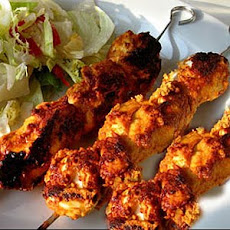Perfectly cooked rice is tasty, light, and fluffy. The grains are distinct and tender but not mushy. Different rice cooks at different parameters; brown rice cooks longer than white, old rice can lose some of its moisture, requiring more water and a longer cooking time. However getting consistently good results is not impossible. Rice can be cooked in one of several ways: boiled and steamed. There is a great variation in personal preference as to the hardness or softness of rice desired. In any event , properly cooked rice should be dry and uniform in texture. Even the softest rice should have all moisture completely absorbed into each grain and not left between the grains. (This does not, of course, apply to congee). The absorption method of cooking long-grain rice described below is the most commonly used.
Basmati Rice Rinse the rice several times until water comes out clear and drain off water. Excess water can make your rice mushy. For fluffier, faster cooking rice, soak it in cold water for about half an hour prior to cooking. You can skip this step and still get good results. If you do soak your rice, be sure to drain it thoroughly.
Add 1 1/2 to 2 cup of clear water (depending on softness desired, soaked rice requires less water) for every cup of rice and boil over big fire while stirring occasionally to prevent sticking that will lead to burning. Stir gently or it could break the rice. Use a pot with a tight-fitting lid that is big enough to provide plenty of room above the rice for steam. A tight lid keeps the steam in. Some cooks add a bit of butter or olive oil at this point to help keep the grains from sticking together. A few drops of lemon juice is used not only to prevent sticky rice, but to retain the "whiteness" of white rice. For some, this is not a good practice because it masks the natural flavor of the rice.
Lower the heat to a simmer when the water has been evaporated and small craters form on the surface. Cover and cook for 12~15 minutes. Note that soaked rice requires shorter cooking time. Also, t he greater the quantity of rice, the longer the heat is retained, and the shorter the cooking time. Avoid lifting the lid when the rice is cooking. For some reasons if you need to, do it very quickly. To test if the rice is cooked, squeezed a grain between the thumb and index finger. If it's cooked it will be soft, if uncooked, there will be a hard particle of starch in the centre of the grain.
At this stage, the top layer of the rice is drier than the bottom, which can be very moist. Gently f luff the rice with a fork or chopstick to avoid breaking the fragile rice below. Then let it stand, covered, for five to 30 minutes. This results in a uniform texture, with the bottom layers as fluffy as the top.
If there is a little liquid remaining once the rice is cooked, remove the cover and raise the heat to evaporate the liquid quickly (make sure that the rice does not stick to the pan) OR dry the rice in the oven at 300ºF for 7 to 15 minutes.
If there is a lot of cooking liquid remaining, drain the rice (the leftover cooking liquid can be used to make soups, sauces, or stews). Place the drained rice in the oven or on the stove briefly to dry it.
If the rice is not fully cooked, add just enough water to create a little steam. Put the lid on and cook the rice on very low heat for another 5 minutes.
If the bottom layer of rice has burned, run cold water over the outside of the pot's bottom to cool it down and retard the burnt flavor from spreading to the rest of the rice. Unload as much rice as you can salvage.
While cooking rice add a few drops of lemon juice. The color of the grains become bright white.
Digital Wedding Album Design Done Perfectly
13 years ago



No comments:
Post a Comment